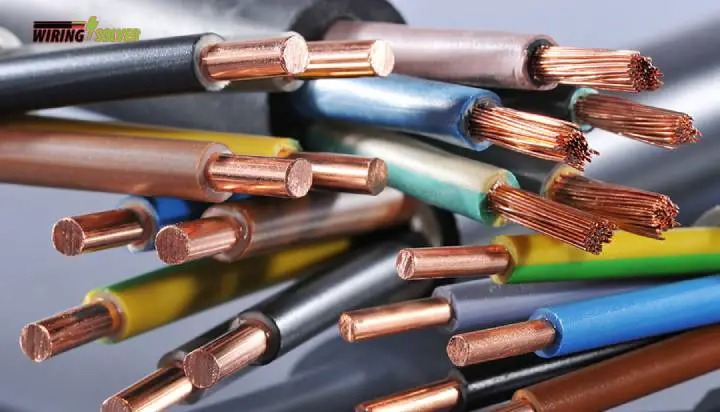A 10 gauge wire is not generally used for residential purposes. It is thicker than the 12 gauge wire, the 14 gauge wire, and the 16 gauge wires and has many uses. These wires are available in different ampacity levels.
10 gauge wires are generally used for wiring a 30 amp RV plug. To avoid malfunctioning of the electric system, the length of the wire is an important factor to consider. The distance you can run a 10-gauge wire for a 220V circuit depends on several factors, including the specific application and the acceptable voltage drop.
The amperage, not the voltage, determines the wire size. Although it is a significant factor, the voltage is not the main factor. The wire size is unaffected by voltage. Without first knowing the amps, it is impossible to calculate the 220V wire size.
How to Calculate the Maximum Distance for a 10-Gauge Wire

You can follow the following steps to determine the maximum possible distance for a 10 gauge wire at 220 volts with an acceptable voltage drop.
1. Acceptable Voltage Drop
The National Electrical Code (NEC) normally advises a voltage drop of no more than 3% for branch circuits and 5% for feeder circuits. However, Local laws and specific applications could have different requirements.
According to NEC 310-16 Permitted Ampacities of Insulated Conductors, a 10 gauge wire can carry 30 amps at a temperature of 60 °C. It is not as simple as it sounds.
2. Maximum Allowable Voltage Drop
To calculate the maximum allowable voltage drop, multiply the volts with the percent of the voltage drop.
The formula according to the Ohm’s law is Volts = Amps x Resistance
- For a 3% voltage drop: 0.03 (3%) x 220V = 6.6V
- For a 5% voltage drop: 0.05 (5%) x 220V = 11V
3. Current Draw of The Circuit
The current draw of the circuit will depend on the use and application. It depends upon which appliance or equipment you are connecting to your circuit.
Use a voltage drop calculator online or consult voltage drop tables. Using these tools, you can calculate the maximum distance your 10-gauge wire can be run while maintaining an acceptable voltage drop.
You should remember that these calculations are very important to ensure the safety and efficiency of your electrical circuit. The wrong wire sizing or excessive voltage drop can result in overheating, reduced appliance performance, and potential safety hazards.
Factors Influencing 10-Gauge Wire Distance Limit

The length limit of a 10-gauge wire is primarily determined by voltage drop, which refers to the decrease in voltage caused by the wire’s internal resistance. Voltage drop can impact the performance of connected equipment.
Various factors influence the resistance of a wire, which in turn affects the voltage drop. These factors include:
1. Length of The Wire
The longer the wire, the higher its resistance, and therefore, the greater the voltage drop. Larger voltage dips may happen because of longer wires. The resistance increases as the wire length increases because the current covers a longer distance.
2. Current Load
The amount of current flowing through the wire affects the voltage drop. Higher current loads result in greater voltage drops.
3. Material of The Wire
Different materials have varying resistances. A more conductive wire material will cause smaller voltage drops. Given the same wire thickness and length, copper will experience lesser voltage drops than aluminum because copper is a more conductive material.
4. Diameter of The Wire
A thicker wire causes smaller voltage drops. More current can flow through a given length of wire that is thicker than 10 gauge wire.
5. Temperature
Wire resistance increases with temperature. Elevated temperatures can lead to higher resistance and, consequently, greater voltage drop. Higher temperatures result in a higher resistance for copper and aluminum wires.
6. Installation Method
Proper installation techniques, such as using appropriate connectors and maintaining proper wire connections, can minimize resistance and voltage drop.
7. Voltage Tolerance
Some devices or equipment may have specific voltage tolerances. Excessive voltage drop can affect their performance or safety. These factors should be considered when determining the maximum allowable distance for a 10-gauge wire in a specific electrical circuit to ensure proper functioning and safety.
Under 30 amps, 10 gauge wire can run up to 57 feet at 220 volts. A wire of this size may support up to 30 amps for common domestic applications, but it’s wise to keep this number in mind before you begin any wiring project.
The voltage will dip more frequently the longer your line is run. You can use thicker wire if you’re installing a circuit with a high current need, but lower-gauge wire is more expensive.
Conclusion
At 30 amps, 10 gauge wire can run up to 57 feet, while longer cables can have lower current ratings. Additionally, the length of a 10 gauge wire depends on several variables, including the wire’s material, current, installation method, voltage tolerance, temperature, and the voltage drop of the wire.
Therefore, you should consistently check the length of the wire to ensure your appliances and equipment receive enough electricity to operate. While this looks easy enough, it can actually be quite tedious to calculate the maximum length if you are not an electrician or an engineer.

